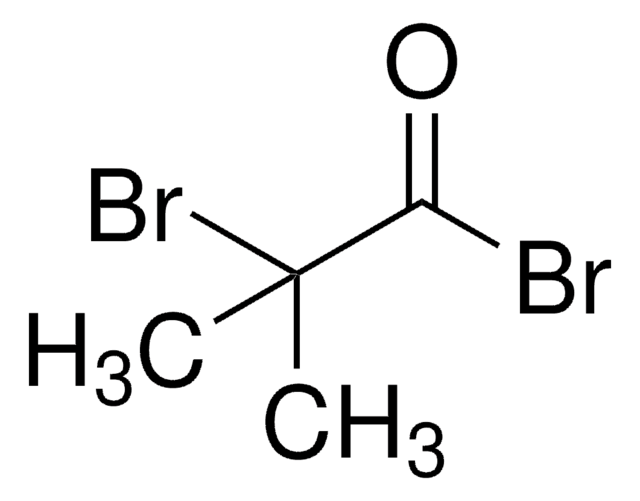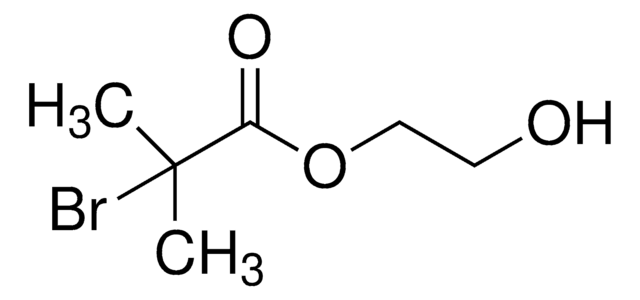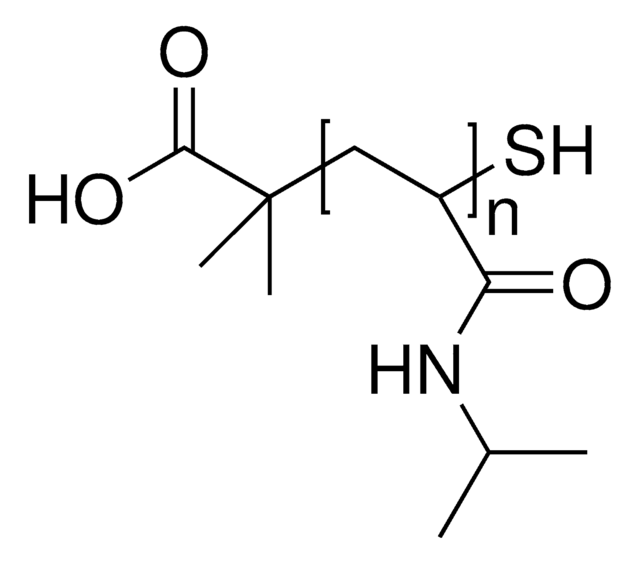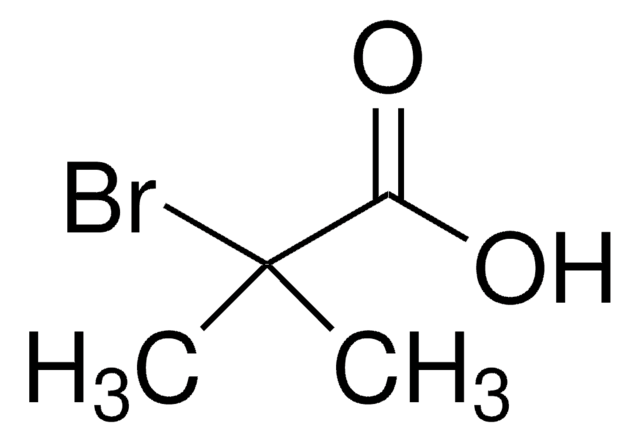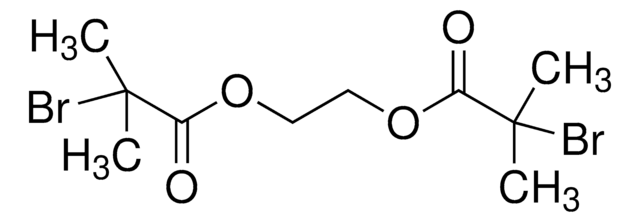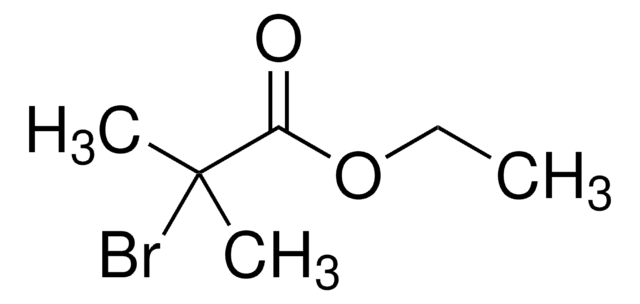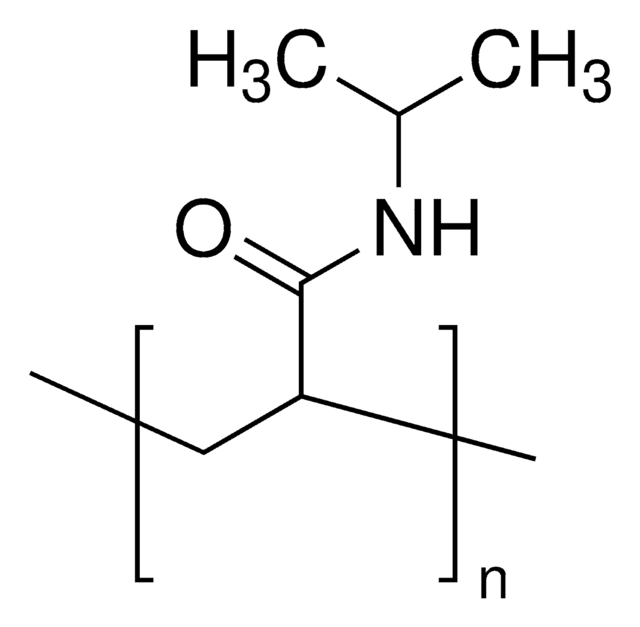733350
Bis[2-(2-bromoisobutyryloxy)undecyl] disulfide
97%
Sinónimos:
11,11′-Dithiobis[1-(2-bromo-2-methylpropionyloxy)undecane], DTBU
About This Item
Productos recomendados
Ensayo
97%
Formulario
solid
solubilidad
1.500 at 20 °C
densidad
1.177 g/mL at 25 °C
cadena SMILES
CC(C)(Br)C(=O)OCCCCCCCCCCCSSCCCCCCCCCCCOC(=O)C(C)(C)Br
InChI
1S/C30H56Br2O4S2/c1-29(2,31)27(33)35-23-19-15-11-7-5-9-13-17-21-25-37-38-26-22-18-14-10-6-8-12-16-20-24-36-28(34)30(3,4)32/h5-26H2,1-4H3
Clave InChI
IEGYEGYUHSQEAZ-UHFFFAOYSA-N
Aplicación
Palabra de señalización
Warning
Frases de peligro
Consejos de prudencia
Clasificaciones de peligro
Eye Irrit. 2 - Skin Irrit. 2 - STOT SE 3
Órganos de actuación
Respiratory system
Código de clase de almacenamiento
11 - Combustible Solids
Clase de riesgo para el agua (WGK)
WGK 3
Punto de inflamabilidad (°F)
Not applicable
Punto de inflamabilidad (°C)
Not applicable
Elija entre una de las versiones más recientes:
Certificados de análisis (COA)
¿No ve la versión correcta?
Si necesita una versión concreta, puede buscar un certificado específico por el número de lote.
¿Ya tiene este producto?
Encuentre la documentación para los productos que ha comprado recientemente en la Biblioteca de documentos.
Los clientes también vieron
Artículos
Atom transfer radical polymerization (ATRP) has emerged as one of the most successful synthetic techniques for the preparation of polymers with predetermined molecular weights, narrow molecular weight distributions, and high degrees of chain end functionalities.
ATRP polymerization, chain transfer agent, living polymerization, functional telechelic polymers
Find how atom transfer radical polymerization (ATRP) tools can be used for the synthesis of well-defined functionalized polymers.
Applying ARGET ATRP to the Growth of Polymer Brush Thin Films by Surface-initiated Polymerization
Protocolos
Sigma-Aldrich presents an article about the typical procedures for polymerizing via ATRP, which demonstrates that in the following two procedures describe two ATRP polymerization reactions as performed by Prof. Dave Hadddleton′s research group at the University of Warwick.
Nuestro equipo de científicos tiene experiencia en todas las áreas de investigación: Ciencias de la vida, Ciencia de los materiales, Síntesis química, Cromatografía, Analítica y muchas otras.
Póngase en contacto con el Servicio técnico![Bis[2-(2′-bromoisobutyryloxy)ethyl]disulfide](/deepweb/assets/sigmaaldrich/product/structures/154/479/8d52d6e3-59da-4e56-8d9e-41b636138ca6/640/8d52d6e3-59da-4e56-8d9e-41b636138ca6.png)
